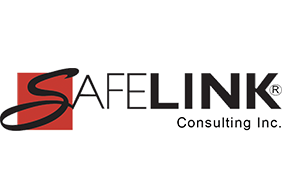National recommendations have been made by the National Tuberculosis Controllers Association and CDC about Tuberculosis screening, testing, and treatment of U.S. healthcare workers. Read on to learn more about these changes and how they may apply to your business, as well as, compliance and OSHA's inspection criteria.
On May 17, 2019 the Centers for Disease Control and Prevention (CDC) published MMWR 68(19);439-443 which updates the 2005 CDC guidelines for preventing TB transmission in health care settings. The CDC reported the following:
º Recent data suggests that TB rates in the US have declined substantially, therefore, it reduces the risk to health care personnel.
º Annual national TB rate in 2017 was 2.8 cases per 100,000 population which represents a 73% decrease from the rate in 1991 and a 42% decrease from the rate in 2005.
º The 2005 CDC guidelines that are outside the scope of health care personnel screening, testing, treatment, and education remain unchanged. Facilities should continue facility risk assessments for guiding their infection control policies and procedures.
The changes are as follows:
|
Category |
2019 Recommendation |
|
Baseline (preplacement) screening and testing |
TB screening of all HCP, including: a symptom evaluation and test (IGRA or TST) for those without documented prior TB disease or LTBI (unchanged); and individual TB risk assessment (this is new) |
|
Post exposure screening and testing |
Symptom evaluation for all HCP when an exposure is recognized. For HCP with a baseline negative TB test and no prior TB disease or LTBI, perform a test (IGRA or TST) when the exposure is identified. If that test is negative, do another test 8-10 weeks after the last exposure. |
|
Serial screening and testing for HCP without LTBI |
Not routinely recommended (new); can consider for selected HCP groups; recommend annual TB education for all HCP, including information about TB exposure risks for all HCP (new emphasis) |
|
Evaluation and treatment of positive test results |
Treatment is encouraged for all HCP with untreated LTBI, unless medically contraindicated (new) |
Abbreviations:
IGRA = interferon-gamma release assay
LTBI = latent tuberculosis infection
TST = tuberculin skin test
To comply:
º Include protocols for tuberculosis infection control in the office’s written infection control program.
º Assign responsibility for managing the TB infection control program.
º Train personnel annually on risks associated with exposure to tuberculosis.
º Conduct an annual risk assessment for the facility. Contact the local or state health department to find out the number of tuberculosis cases in the community.
º Conduct an individual risk assessment of all personnel upon hire. Test results govern any follow-up required.
º Test all personnel upon hire either by IGRA or TST.
º Personnel with positive test results should consult with their physician to determine whether any treatment is required.
º Ask all patients about past history of or exposure to TB.
º Defer treatment of patient with TB disease or symptoms – refer to another medical facility.
º Do not treat patients with TB disease or symptoms of TB until cleared by a physician.
º Follow post exposure screening and testing guidelines when an exposure is recognized.
OSHA’s Inspection Criteria
OSHA published Directive Number CPL-02-02-078 on 6/30/2015 explaining what an OSHA inspector should look for in regard to protection of workers from TB. It does include dental-care settings in the list of Outpatient settings that may be included (Page 7 of the Directive). The inspection will include the following:
º Review of the employer’s written plans for employee TB protection which could include a TB infection control program, a respiratory protection plan, and a medical screening program.
º Employee interviews and site observations.
º Employees who will be requested to be a part of the inspection are the infection control director, the occupational health professional responsible for control of occupational health hazards, and other individuals who may be responsible for providing records pertinent to the inspection.
º Information showing whether or not the facility has had a suspected or confirmed TB case among patients/clients or employees within the six months prior to the inspection.
º Inspector will contact the appropriate local or state health department to determine whether the facility has reported any TB cases during the prior year.
º Inspector will review OSHA 300 log entries.
º If inspector determines there are no suspected or confirmed TB cases among patients/clients or employees in the facility within the previous six months, then the TB portion of the inspection should be suspended.
º OSHA also recommends that employers in states with a State Plan should contact that agency to find out if the state has any other requirements.
OSHA refers to the CDC Guidelines for Preventing the Transmission of Mycobacterium Tuberculosis in Health-Care Settings, 2005 which can be found at: https://www.cdc.gov/mmwr/preview/mmwrhtml/rr5417a1.htm?s_cid=5417a1_e
Learn more about what SafeLink Consulting can do to help your business with compliance services, including safety compliance, to meet OSHA training requirements and quality system consulting to meet FDA compliance. SafeLink Consulting assists businesses with workplace safety training, infection control training, HIPAA training online, quality systems, assessments, audits, due diligence, and more.
Industries include:
Dentistry compliance - assisting the dental practice with meeting requirements for OSHA, HIPAA, EPA, and CDC guidelines, patient safety and employee health & safety
Dental Laboratory compliance - assisting the dental lab with meeting requirements for OSHA, FDA, and CDC guidelines, employee health & safety, plus FDA requirements for lab manufacturing custom implant abutment /gmp for medical device manufacturers
Medical Device Manufacturers compliance - assisting with meeting OSHA compliance & FDA requirements, GMP - good manufacturing practices
General Industry compliance - assisting with OSHA compliance and FDA compliance as it pertains to the specific business
Beverage Industry compliance - assisting beverage businesses such as the craft brewery, winery, cidery, distillery, vintner with meeting OSHA compliance, health & safety, FDA requirements / GMP - Good Manufacturing Practices.
Get notification when new regulatory compliance training courses are added plus upcoming events by subscribing to our email news.







Leave Comment